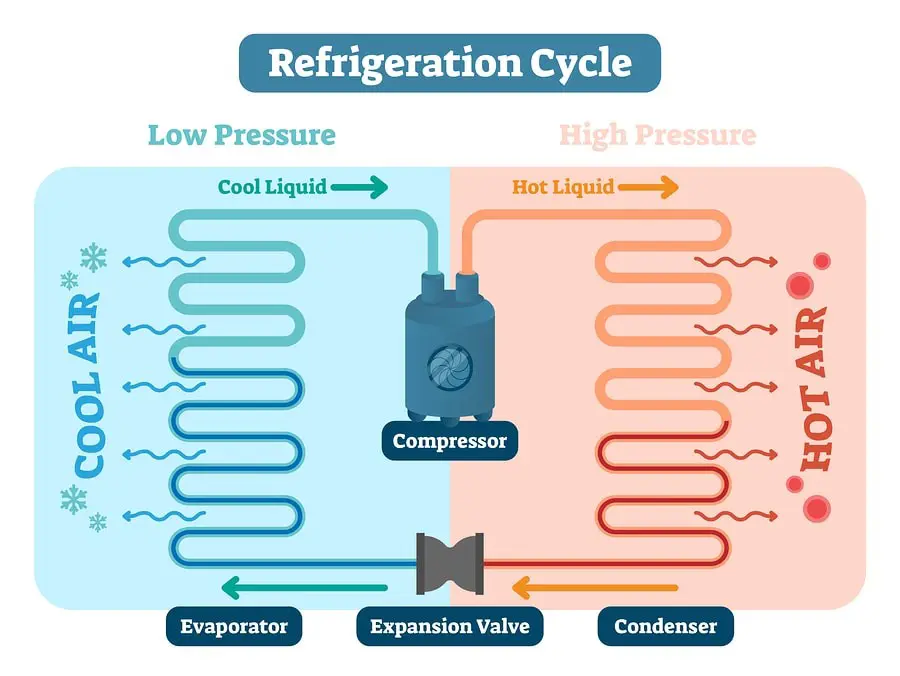Condensers, compressors, and evaporators all play a crucial role in how refrigeration systems work, from air conditioners to commercial cool rooms and walk-in freezers. Refrigeration systems don’t actually work by cooling the air within the fridge or freezer. Rather, they use refrigerant to absorb heat from within the system and release it outside of it in a process called the refrigeration cycle.
The refrigerant circulates through the condenser, compressor, and evaporator to continuously remove more and more heat from within the space being cooled until the desired temperature is reached. Each of those three components handles a different aspect of the refrigeration cycle, which we’ll explore below.
Principles of the Refrigeration Cycle
Liquids absorb heat when they change from a liquid to a gas. Gases give off heat when they change from a gas to a liquid. A small amount of refrigerant constantly moves through the same cycle of compression, condensation, expansion, and evaporation in a closed circuit in order to move heat from one area to another. This continuous cycle is possible because refrigerant has such a low boiling point (between 4 to 10 degrees Celsius), allowing it to easily change from liquid to gas and back again.
If you’ve ever felt the back side of a fridge or air conditioner, you would have noticed that it also produces heat in addition to cold air. This is the fridge condenser side of the system where heat is being expelled. The function of evaporator side is where the air is being cooled as this is where heat is being transferred from the air into the refrigerant.
Here’s the difference between condenser and evaporator:
The Condenser
What is condenser in refrigeration system? The condenser is a unit with multiple components including condenser tubes and fins, a fan, the compressor and copper tubing as well as switches and valves. travels outside via a copper tube to the freezer condenser unit. Here, the low-pressure, warm refrigerant gas penetrates the compressor. The compressor pressurises the refrigerant, revolving it into a hot, high-pressure gas.
This gas leaves the compressor and flows into the condenser coils. This is where the refrigerant releases much of the heat that was absorbed in the evaporator. The fan blows air over the condenser coils, so the refrigerant inside loses heat. There are many condenser coils, so there are plenty of opportunities to release the heat carried by the refrigerant while it changes from a gas back to a liquid. From there, it flows back into the expansion valve through a copper tube to absorb more heat in the evaporator.
The Evaporator
What does an evaporator do? The evaporator coil is the part of the procedure where the refrigerant absorbs heat. It’s where the chilly air comes from. The evaporator coil is located inside or close to the air handler where the fan is. Evaporator coils are made from metals that conduct heat easily, such as copper, aluminium or steel.
High pressure liquid comes from the condenser through the expansion valve which reduces pressure on the refrigerant, turning it into gas. Heat exchange occurs in these coils, forming a cold surface. The blower moves air across the cold surface, creating cool air.
Commercial Freezers and Cool Rooms in Sydney
Cold-Rite Refrigeration provides a range of commercial and industrial refrigeration solutions, including walk-in fridges, commercial water chillers, humidity-controlled rooms, and more. We have a fleet of mobile workshops available for breakdown services, installation, or planned maintenance throughout the greater Sydney metropolitan area extending to the Blue Mountains, Central and South Coasts.



